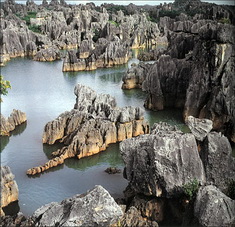 South China Karst was inscribed as World Natural Heritage on June 27, 2007. The South China Karst region extends over a surface of half a million square kilometers lying mainly in Yunnan, Guizhou and Guangxi Provinces. South China Karst represents one of the world's most spectacular examples of humid tropical to sub-tropical karst landscapes. The South China Karst region extends over a surface of 500'000 square kilometers and lies mainly in the provinces of Yunnan, Guizhou and Guangxi. South China is unmatched for the diversity of its karst features and landscapes. South China Karst represents three of the world's most spectacular examples of humid tropical to sub-tropical karst landscapes Libo Karst, Shilin Karst and Wulong Karst.
South China Karst was inscribed as World Natural Heritage on June 27, 2007. The South China Karst region extends over a surface of half a million square kilometers lying mainly in Yunnan, Guizhou and Guangxi Provinces. South China Karst represents one of the world's most spectacular examples of humid tropical to sub-tropical karst landscapes. The South China Karst region extends over a surface of 500'000 square kilometers and lies mainly in the provinces of Yunnan, Guizhou and Guangxi. South China is unmatched for the diversity of its karst features and landscapes. South China Karst represents three of the world's most spectacular examples of humid tropical to sub-tropical karst landscapes Libo Karst, Shilin Karst and Wulong Karst. The Wulong Karst is located at Wujiang River downriver of Southeastern Chongqing, and it includes three karst systems of Sanqiao Natural Bridges, Furong Jiang karst gorge and caves round, and Houping erosion tiankengs, which are distributed in mid-north, southeast and northeast of Wulong County respectively.
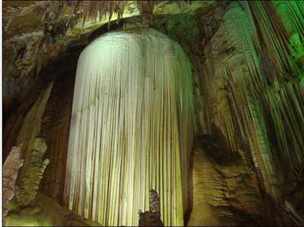
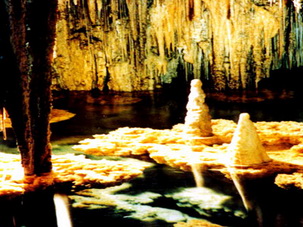
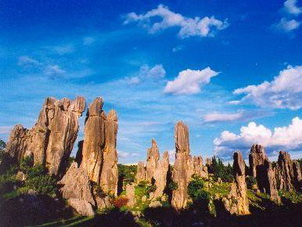
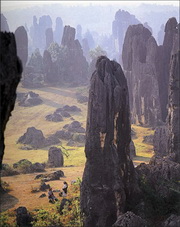
Libo Cone Karst Nominated Site of South China Karst application for World Natural Heritage lies in Libo County, South Guizhou Buyi and Miao Autonomous Prefecture, Guizhou Province, and has a mean altitude of 747m ranging from 385 to 1109m. It is a typical site of cone karst on the transitional zone between Guizhou plateau and Guangxi lowland, outstanding for their full spectra of gradual change from plateau karst to the lowland karst.
The Stone Forest National Park is located in Shilin Yi Autonomous County of Yunnan Province, 80 kilometers southeast of Kunming City. It covers 350 square kilometers and consists of Major Stone Forest, Naigu Stone Forest, Changhu Lake, Grand Waterfall, etc.

 China Tours
China Tours Tibet Tours
Tibet Tours China Theme Tours
China Theme Tours Off The Beaten Track
Off The Beaten Track Yangtze Cruises
Yangtze Cruises China Trip Planner
China Trip Planner Travel Agents
Travel Agents China Tours
China Tours Tibet Tours
Tibet Tours China Theme Tours
China Theme Tours Off The Beaten Track
Off The Beaten Track Yangtze Cruises
Yangtze Cruises China Trip Planner
China Trip Planner Travel Agents
Travel Agents


 0086-28-85711328
0086-28-85711328 0086-28-85546015
0086-28-85546015





 South China Karst was inscribed as World Natural Heritage on June 27, 2007. The South China Karst region extends over a surface of half a million square kilometers lying mainly in Yunnan, Guizhou and Guangxi Provinces. South China Karst represents one of the world's most spectacular examples of humid tropical to sub-tropical karst landscapes. The South China Karst region extends over a surface of 500'000 square kilometers and lies mainly in the provinces of Yunnan, Guizhou and Guangxi. South China is unmatched for the diversity of its karst features and landscapes. South China Karst represents three of the world's most spectacular examples of humid tropical to sub-tropical karst landscapes Libo Karst, Shilin Karst and Wulong Karst.
South China Karst was inscribed as World Natural Heritage on June 27, 2007. The South China Karst region extends over a surface of half a million square kilometers lying mainly in Yunnan, Guizhou and Guangxi Provinces. South China Karst represents one of the world's most spectacular examples of humid tropical to sub-tropical karst landscapes. The South China Karst region extends over a surface of 500'000 square kilometers and lies mainly in the provinces of Yunnan, Guizhou and Guangxi. South China is unmatched for the diversity of its karst features and landscapes. South China Karst represents three of the world's most spectacular examples of humid tropical to sub-tropical karst landscapes Libo Karst, Shilin Karst and Wulong Karst. 


